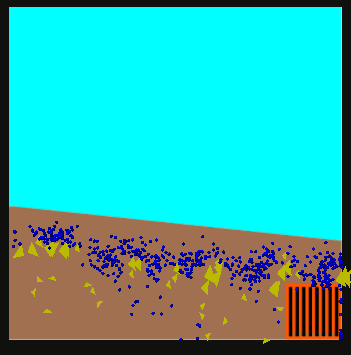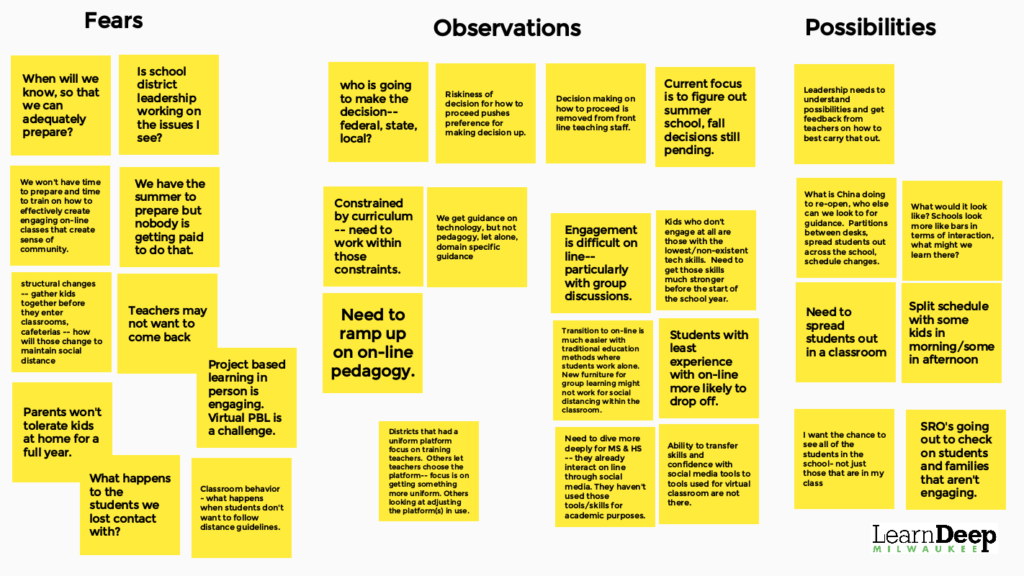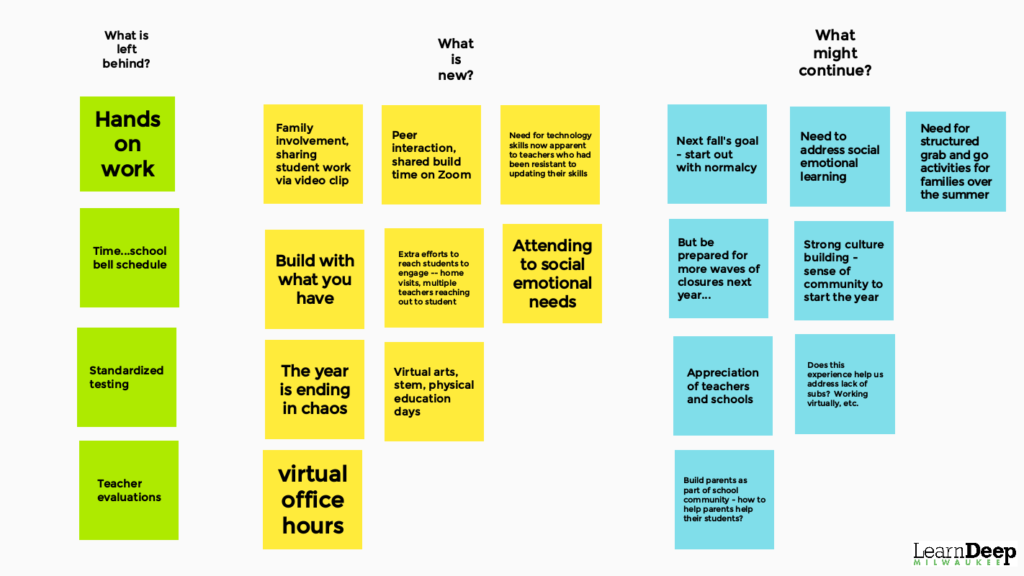Last Week’s Collab Lab gave us a chance to share some updates on two projects we have running with students and the impacts we’ve see running those in a distance learning environment. That set up a longer conversation about what educators need as they look to engage their students in a real-world challenge.
Several of the concerns we talked through were issues prior to the pandemic:
- How can I connect and work with local professionals who can offer domain expertise?
- How can I figure out who I need to know in Milwaukee (beyond domain experts) to execute the project?
- How do I get students to the point of figuring out what they want to explore?
- How do I assemble a real audience for students to present to?
- How do I get students to recognize that their teacher is not the audience?
- How do I give students the experience of doing work in the real world?
Distance learning has imposed new concerns in taking on new challenges. Chief among these is gaining student engagement, but educators also struggle as the find effective ways to use distance learning technology. That this is so new to educators means that everyone is trying to figure things out at the same time. There is no colleague or expert to turn to for a definitive answer.
This, and the conversations that continued after we wrapped up the formal discussion, suggests to us that the key need for educators who want to engage their students in real-world work, particularly in a time of distance learning, is a network of colleagues who can offer support, ideas, and connections.




